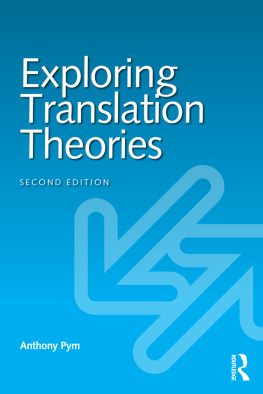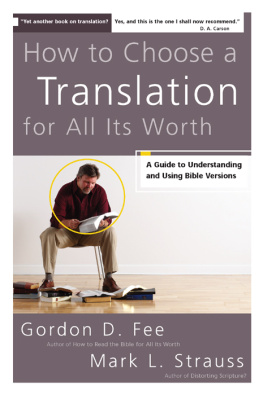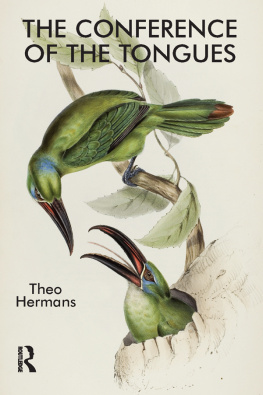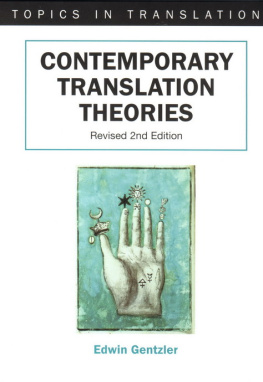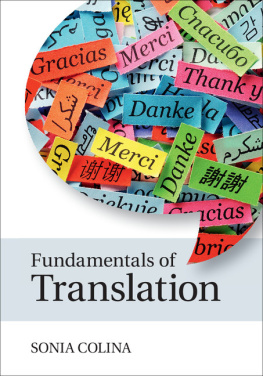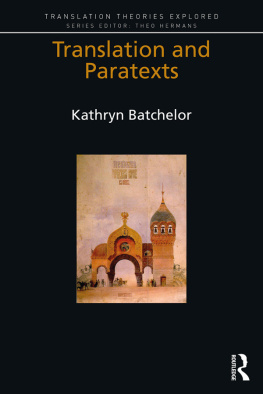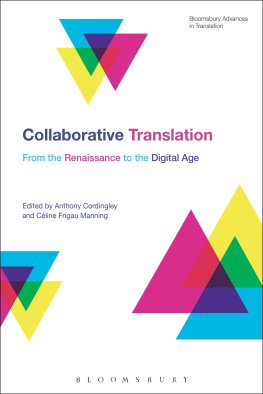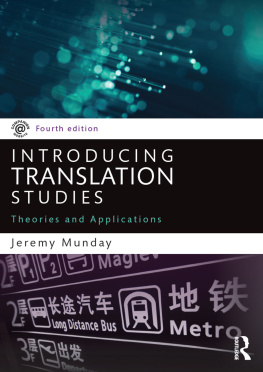Exploring Translation Theories
Exploring Translation Theories presents a comprehensive analysis of the core contemporary paradigms of Western translation theory.
The book covers theories of equivalence, purpose, description, uncertainty, localization, and cultural translation. This second edition adds coverage on new translation technologies, volunteer translators, non-lineal logic, mediation, Asian languages, and research on translators cognitive processes. Readers are encouraged to explore the various theories and consider their strengths, weaknesses, and implications for translation practice. The book concludes with a survey of the way translation is used as a model in postmodern cultural studies and sociologies, extending its scope beyond traditional Western notions.
Features in each chapter include:
An introduction outlining the main points, key concepts, and illustrative examples.
Examples drawn from a range of languages, although knowledge of no language other than English is assumed.
Discussion points and suggested classroom activities.
A chapter summary.
This comprehensive and engaging book is ideal both for self-study and as a textbook for translation theory courses within Translation Studies, Comparative Literature, and Applied Linguistics.
Anthony Pym is Professor of Translation and Intercultural Studies at the Rovira i Virgili University, Spain. He is also President of the European Society for Translation Studies, a fellow of the Catalan Institution for Research and Advanced Studies, and Visiting Researcher at the Monterey Institute of International Studies. His publications include The Status of the Translation Profession in the European Union (2013) and On Translator Ethics (2012).
Exploring Translation Theories
Second edition
ANTHONY PYM

First published 2010, this edition published 2014
by Routledge
2 Park Square, Milton Park, Abingdon, Oxon OX14 4RN
and by Routledge
711 Third Avenue, New York, NY 10017
Routledge is an imprint of the Taylor & Francis Group, an informa business
2010, 2014 Anthony Pym
The right of Anthony Pym to be identified as author of this work has been asserted by him in accordance with sections 77 and 78 of the Copyright, Designs and Patents Act 1988.
All rights reserved. No part of this book may be reprinted or reproduced or utilized in any form or by any electronic, mechanical, or other means, now known or hereafter invented, including photocopying and recording, or in any information storage or retrieval system, without permission in writing from the publishers.
Trademark notice: Product or corporate names may be trademarks or registered trademarks, and are used only for identification and explanation without intent to infringe.
British Library Cataloguing in Publication Data
A catalogue record for this book is available from the British Library
Library of Congress Cataloging in Publication Data
Pym, Anthony, 1956
Exploring translation theories / Anthony Pym.Second Edition.
pages cm
1. Translating and interpreting. I. Title.
P306.P95 2014
418.02dc23
2013022987
ISBN: 978-0-415-83789-7 (hbk)
ISBN: 978-0-415-83791-0 (pbk)
ISBN: 978-1-315-85763-3 (ebk)
Contents
Figures
Tables
I am grateful to the following publishers and authors for permission to adapt material of various kinds:
John Benjamins Publishing Company for passages from my article Natural and directional equivalence in theories of translation, published in Target 19/2 (2007) 27194, which forms the basis for ;
Ricardo Muoz Martn for ;
Christiane Nord, for ;
Daniel Gouadec, for .
My sincere thanks to my colleagues Esther Torres Simn and Alberto Fuertes Puerta, who have revised the text, and to those who have helped revise parts of the text: Gideon Toury, Itamar Even-Zohar, Tal Golfajn, Christiane Nord, Jos Ramn Biau Gil, Christina Schffner, John Milton, Serafima Khalzanova, Yukiko Muranaga, and Chie Okada. A good number of valuable points have been made by the translators of the book into Japanese (Kayoko Takeda), Portuguese (Fernando Ferreira Alves and Victor Ferreira), and Spanish (Esther Torres Simn, Humberto Burcet Rojas, and Ana Guerberof). Translators and their revisers are the closest readers.
Special thanks go to the many students and colleagues who have participated in the seminars that have comprised this course since it was first offered in 2003: at Monash University in Melbourne, Australia; in the PhD program in Translation and Intercultural Studies at the Rovira i Virgili University in Tarragona, Spain; and especially at the Monterey Institute of International Studies in the United States.
Further thanks are due to the reviewers of the first edition of this book: Dirk Delabastita, Brian Mossop, Hsin-hisn Tu, Shuhuai Wang, Peng Wang, Shaoshuang Wang, Ernst Wendland, Jonathan Downie, Arzu Eker Rodikakis, and Debbie Folaron. Useful comments have also been received from Ghodrat Hassani. This second edition responds to many of their observations and criticisms, although not allI have not been allowed to make the book longer.
I am also extremely grateful for the editorial guidance provided by Louisa Semlyen and Eloise Cook, who are responsible for the books title.
This is a course on the main paradigms of Western translation theories since the 1960s. It adopts a view of translation that includes interpreting (spoken translation) but does not give any special attention to its problems. The book is not primarily designed to make anyone a better translator; it is mainly for academic work, although it should be accessible to anyone interested in arguments about translationand most translators are. The basic story is that all the theories respond in different ways to one central problem: translation can be defined by equivalence, but there are many reasons why equivalence is not a stable concept. So how can we think about translation beyond equivalence? The answers to that question have been more numerous than many suspect, and often creative and surprising.
The general view taken here is that theory is a field of struggle for or against particular ways of seeing translation. There is no neutral description in this. My mission will have been accomplished whenever anyone finds importance and perhaps pleasure in the contest of ideas, or better, whenever the issues of translation are debated, ideally as part of a pluralist learning project.
Since the first edition of this book, I have become acutely aware that these particular theories are focused on what I call the Western translation form. They concern the kind of translation that a client might pay a translator to do in any Western country, underpinned by a set of unspoken assumptions about equivalence (see 5.4 below). However, there are many other cultures and situations in which notions of translation are not functionally separate from what we would call adaptation or rewriting, and thus do not struggle with and against equivalence. So there are many other possible ways of theorizing translation, and many alternative narratives. I am only telling one of many possible stories. That said, the Western translation form has spread out over the world, as a peculiar traveling companion of modernity, and readers in all countries will nowadays be familiar with it, even as we strive to go beyond it.
This revised edition has added a few aspects to the original survey, particularly with respect to translation technologies, volunteer translators, non-lineal logic, mediation, Asian languages, and process research. But those are not major changesjust some small treats along the way.
Next page
